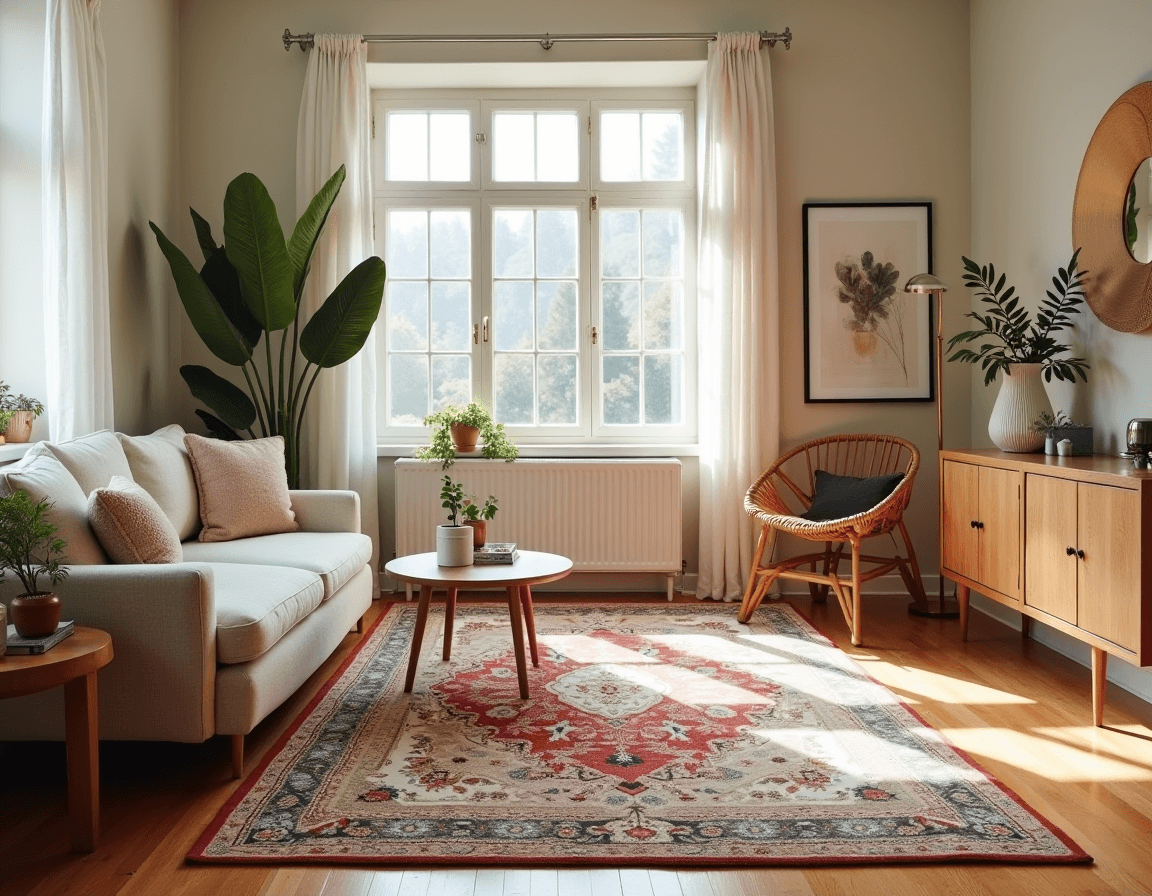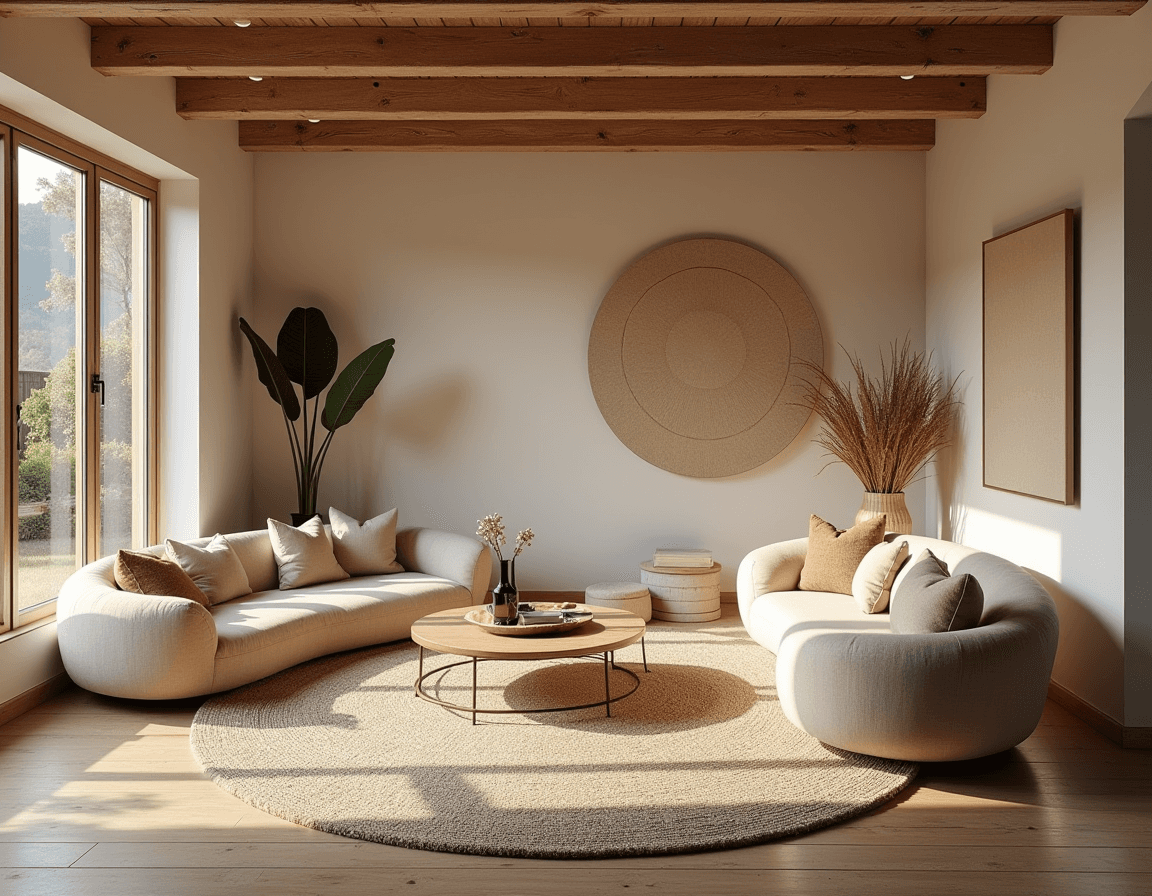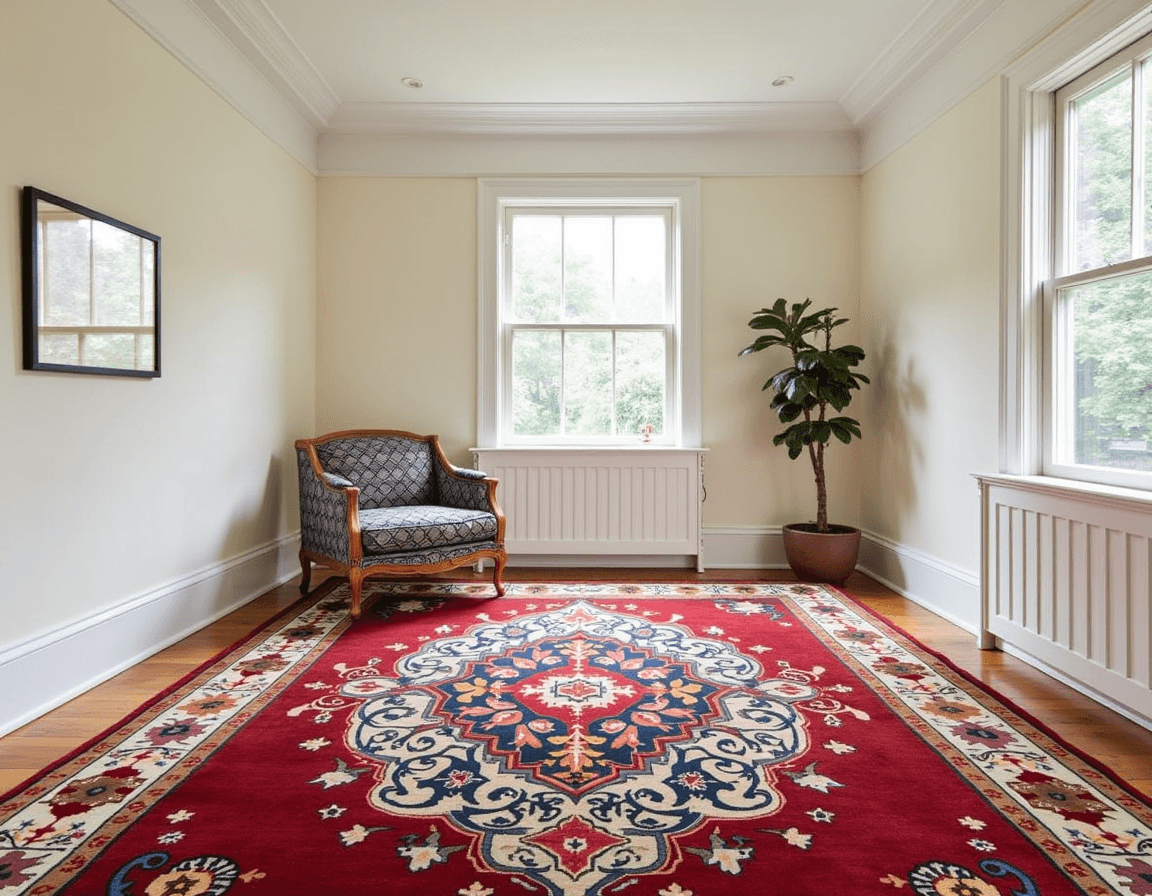Jun 12, 2025
•
Onton Team
Discover these types of rugs, from vintage wool to contemporary jute, and learn how to choose the right style for every room in your home.
Rugs may get walked all over, but that doesn’t make them beneath notice. They anchor furniture, add warmth and texture, and can completely shift the look and feel of a room. Some are made to blend in, others are designed to show off. Either way, a rug does more than just lie there.
With so many types of rugs, choosing the right one means considering much more than what it looks like. In this guide, we’ll walk through different rug styles, materials, and construction types — from retro shags to contemporary jute — so you can find the perfect fit for your space.
4 different types of rugs
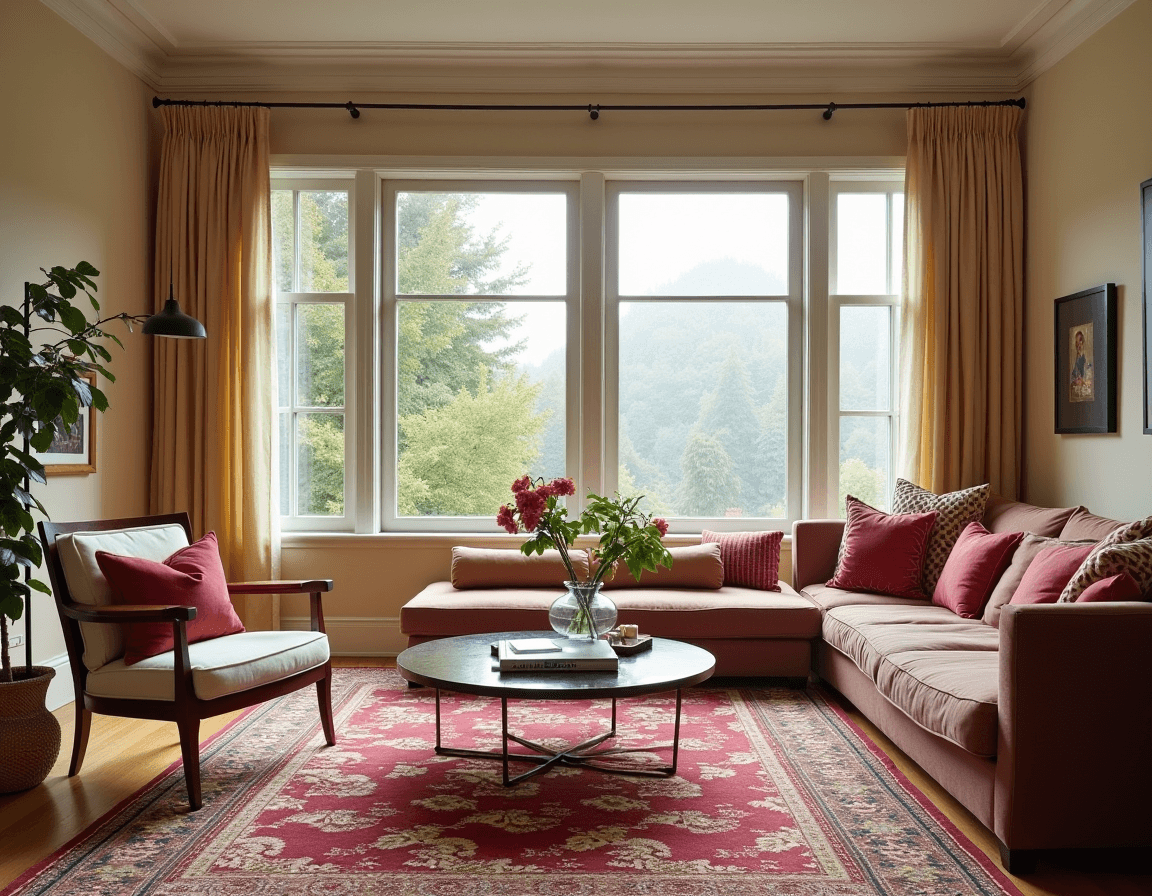
Whether you want to soften the echo of hardwood, add color to a neutral design palate, or visually anchor furniture, rugs do a lot of heavy lifting. Before diving into styles and materials, let’s break down the four most common rug types and see which rooms they work best in.
Area rugs
Sometimes, a room just feels unfinished. That’s where an area rug comes in. Sized to sit under key pieces (like a couch, armchair, and coffee table), it helps define the layout and make everything feel pulled together.
There are lots of types of area rugs with nearly endless colors, patterns, and materials to match your design style. They’re typically big enough to sit under all your main furniture, but you can scale them up or down depending on the room.
Explore different types of area rugs on Onton
Throw rugs
Throw rugs are smaller than area rugs but can make just as big of a statement. They’re commonly used in entryways or areas of a room that need visual flair. Throw rugs are easy to swap out, layer, or experiment with, which makes them ideal for trying out bold patterns or textures without the commitment of a large area rug. Look for tightly knotted or low pile rugs if you need something that holds up to plenty of daily wear.
Runner rugs
Runners are long and narrow rugs perfect for hallways or any high-traffic stretch of floor that could use softness. Runner rugs reduce noise, protect flooring, and add visual flow from room to room. Opt for wool rugs or hand-knotted rugs if you’re placing them somewhere with lots of foot traffic.
If you want to break up straight lines and hard angles, a round rug adds visual layers and can create a softer feel. They’re best suited in entry ways and small dining nooks, or beneath round coffee tables.
6 rug styles to consider
Rugs really do tie the room together — unless you choose a clashing style. From an intricate woven rug for a boho bedroom to an ivory-colored jute rug to pair with a brown couch, here’s a quick look at popular rug styles and the design aesthetics they mesh with.
“Oriental rug” is a catch-all term used to describe the hand-knotted carpet and rug tradition from the East. They’re traditionally made in countries across Asia, and are renowned for high-level craftsmanship — with high price tags to match.
Whether you choose an Oriental rug or their close cousin the Persian rug, both bring a timeless hand-crafted sophistication to any room. Their rich textures and artistic patterns make them stand out as focal points in maximalist, traditional, and bohemian interior design, offering both luxurious beauty and comfort underfoot.
Modern rugs
Modern rugs focus on visual impact over specific materials or techniques. Think bold shapes, abstract patterns, and clean lines that play with contrast and negative space.
Modern rugs range from colorful, curved silhouettes to neutral, geometric designs, making them natural fits for contemporary, mid-century, or maximalist design aesthetics. And modern textiles vary greatly, with many rugs using textiles like luxurious wools, soft silk blends, and airy linen that can elevate the most minimal designs with a tactile sheen.
Antique rugs
Antique rugs show off faded colors and softened patterns, and give your room a story to tell. They’re a favorite in interior design aesthetics that blend old and new, grounding modern furniture with a lived-in feel. They work especially well in living rooms or bedrooms that lean into cottagecore, farmhouse, or classic traditional.
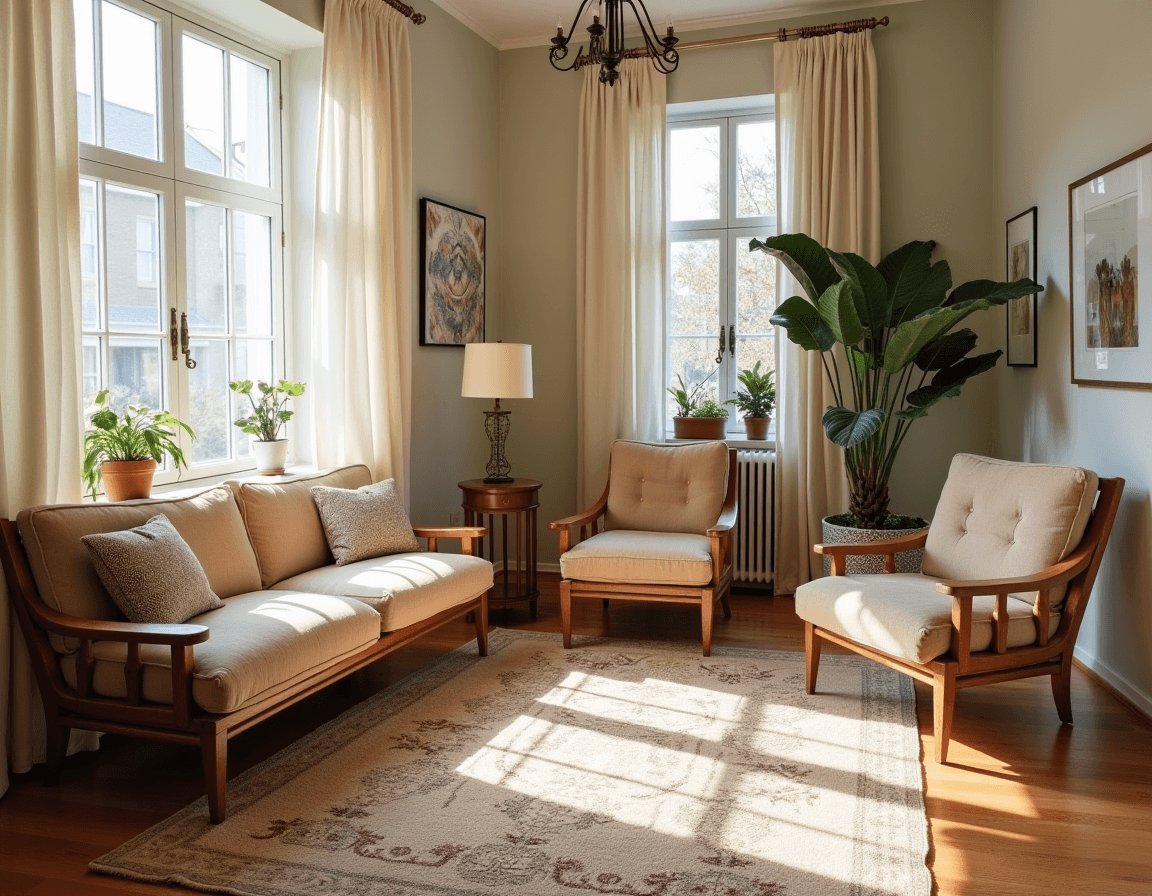
Vintage rugs
Vintage rugs sit in the sweet spot between antique and contemporary. They can range anywhere from 20 to 80 years old and often show signs of wear. Think slightly faded colors, threadbare patches, and a softened feel.
Unlike true antiques, vintage rugs tend to be more affordable and versatile. Their lived-in look adds depth to polished rooms and personality to minimalist design, making them a favorite for designers who want a collector’s vibe.
Moroccan rugs
Discerning interior designers revere Moroccan rugs for their thick wool pile, plush softness, and handcrafted charm. Traditionally woven by nomadic Berber artisans, Moroccan rugs often feature simple geometric patterns in neutral palettes, although you can definitely find saturated reds, blues, and yellows.
Moroccan rugs are great for warming up rooms, whether you want to add a pop of color to an open layout minimalist floor plan or dive head first into an eclectic, retro-inspired vibe. If you want something cozy underfoot that still feels artful and unique, look no further.
Kilim rugs
With their striking geometric patterns and saturated colors, kilim rugs can read like artwork under your feet. These flat woven rugs have a slim and durable structure that’s perfect for layering or reducing noise in high-traffic rooms.
Kilim rugs suit bohemian, eclectic, and Southwestern interior design, where their bold patterns and colors add personality without the bulk. They can also work well in minimalist spaces that need a burst of color.
Search for different types of rugs with pictures on Onton
Common rug materials and their benefits
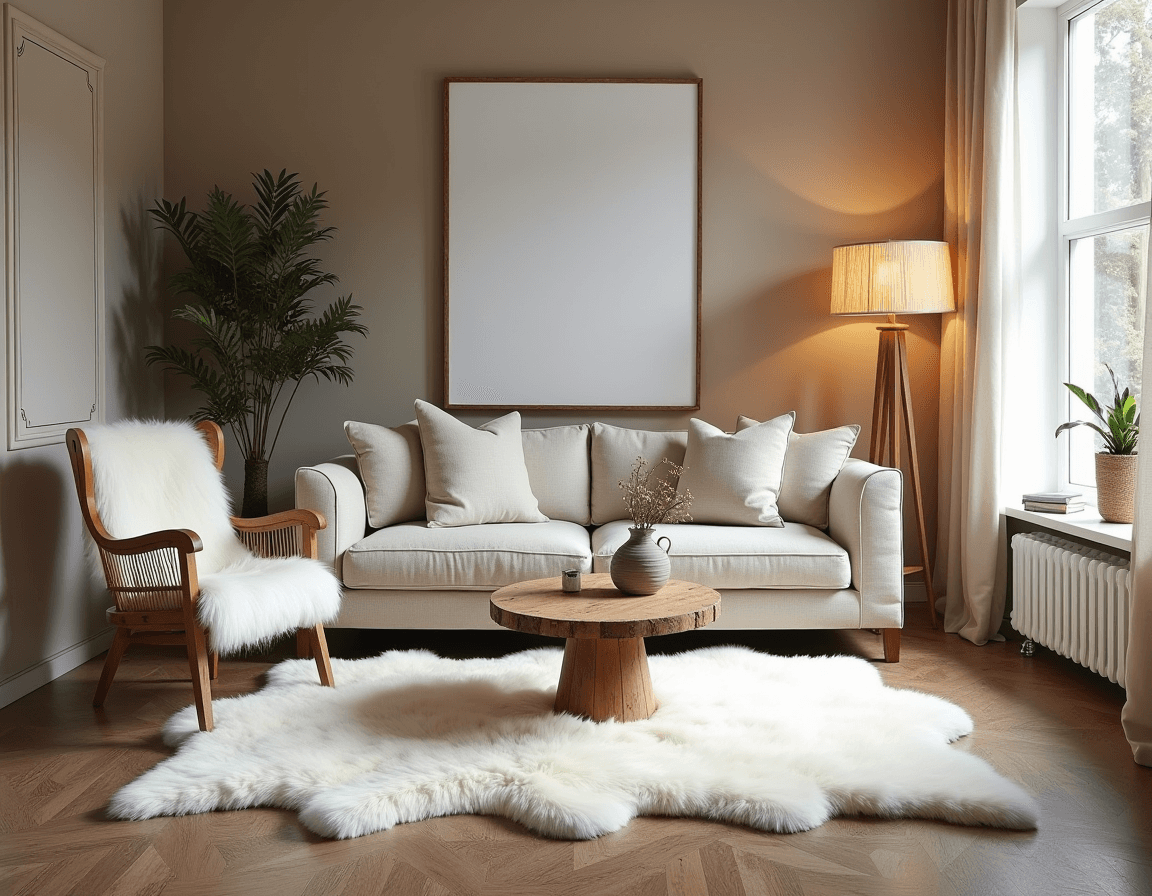
How soft a rug feels beneath your feet is just one element — how long it lasts, how well it holds color, and how it handles daily wear all come down to the rug material. Whether you’re eyeing a plush wool rug, breezy cotton flatweave, or budget-friendly synthetic tufted rug, here’s what you need to know before hitting the “Buy” button:
Wool: A staple material of high-quality area rugs, camel and sheep wool is naturally soft, durable, and stain-resistant. Wool holds color beautifully and feels warm underfoot, making it perfect for living rooms and bedrooms. Wool is found in many hand-knotted Oriental and modern rugs, and although it tends to be more expensive, it ages well with the right care.
Cotton: Cotton is a great material for runner rugs or area rugs in stain-prone spaces like kitchens, entertainment rooms, or kids’ rooms. While it doesn't have the softness of wool, cotton rugs are usually more affordable and can be easily tossed in the wash (depending on their size). Often used in flat woven or braided rugs, cotton gives a laid-back aesthetic.
Jute: A go-to for earthy, laid-back spaces, jute rugs are made from coarse natural plant fibers and typically come in their characteristic brown tone — though you can find dyed versions in muted colors. Jute is popular in knotted and braided rugs, adding texture to a room’s overall look. However, jute rugs don’t do well with moisture and need to be spot-cleaned and dried thoroughly to avoid stains.
Silk and silk blends: Found in high-end Persian and Oriental rugs, silk adds an elegant sheen to formal rooms. Just keep in mind that silk is extremely delicate and demands gentle use and regular cleaning. You can find silk blended with wool to boost durability but should still only use silk to decorate in low foot traffic areas.
Rug construction types: How rugs are made
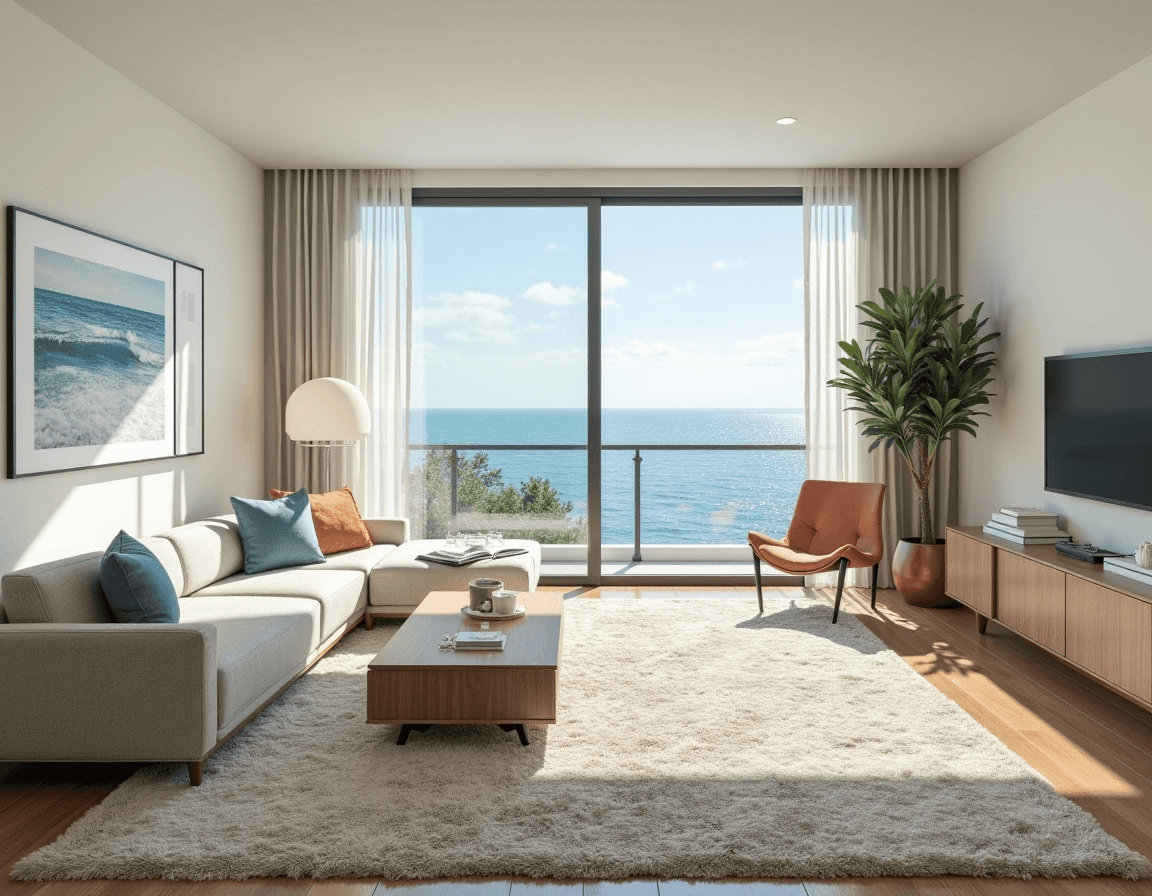
Construction affects durability, texture, and the price tag. From the intricate craftsmanship of hand-knotted rugs to the casual charm of braided styles, here’s a quick look at how rugs are made and what makes each style unique:
Hand-knotted rugs: Every knot is tied by hand, creating an intricate, durable rug. Common in Persian and Oriental designs, these luxurious rugs can last generations with the right care.
Hand-tufted rugs: Made by punching yarn into a fabric backing with a tufting gun, these rugs mimic knotted styles but cost less and wear well. Typically, tufting creates medium to high-pile rugs, adding softness at a lower cost than hand-knotted pieces.
Hooked rugs: Loops of yarn are pulled through a base material, creating a textured, often rustic look ideal for casual or cottage-style rooms.
Braided rugs: Strips of fabric or yarn are braided and sewn together, making durable, cozy rugs perfect for farmhouse or traditional spaces.
Flat-woven rugs: These rugs have no pile. Flat-woven rugs are made by weaving fibers tightly together, creating a thin, durable surface. They tend to be lightweight and easy to clean — great for layering or adding to high-traffic areas.
Choose the right rug type for your space with Onton
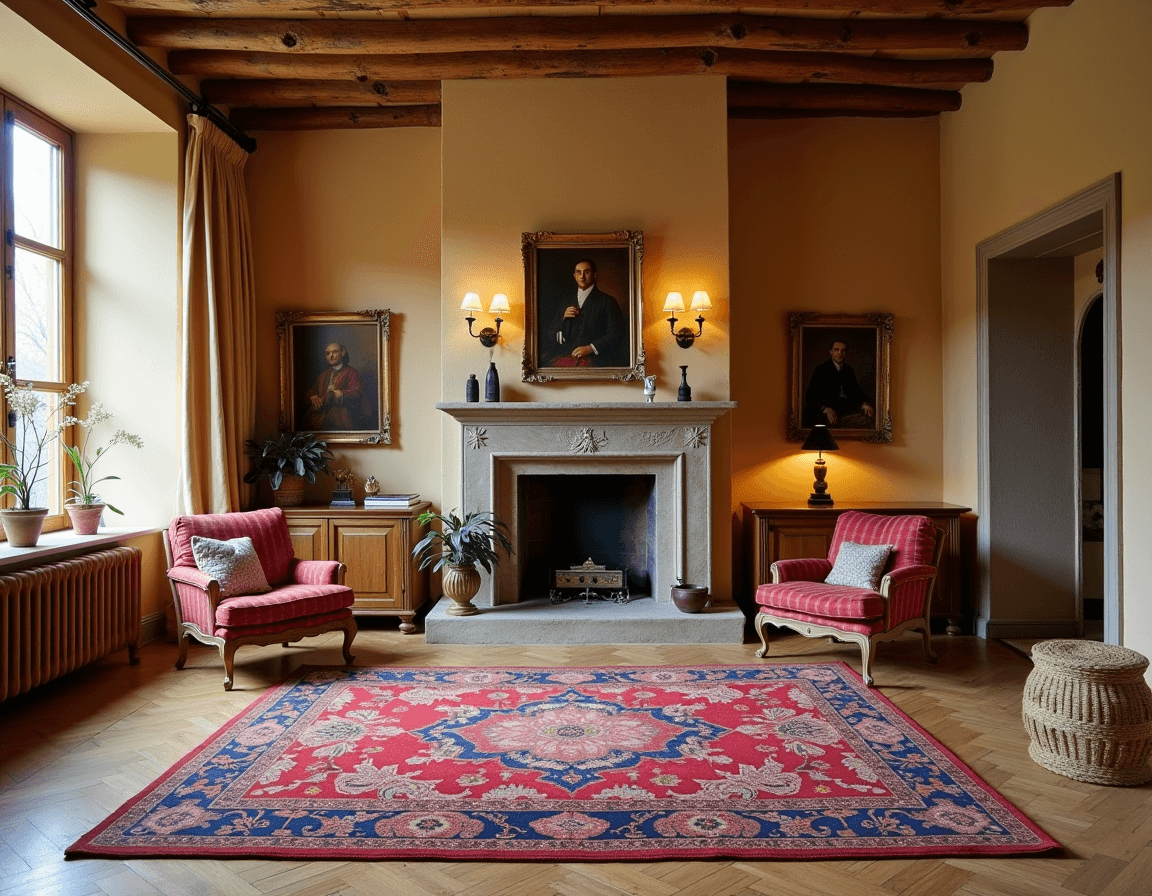
Do you want to add a luxurious hand-knotted rug or a contemporary hand-tufted rug to your collection? Let Onton’s AI-powered search engine help you figure out the rug that makes you want to go barefoot. Try a search like “antique rug” or “hand-tufted area rug” to find the right one.
Once you save your faves, use Onton’s Imagine tool to see how everything fits together. Upload a picture of your space and experiment with different rug types — it’s a simple way to decorate your dream home.
Dream up your ideal rug style with Onton.

